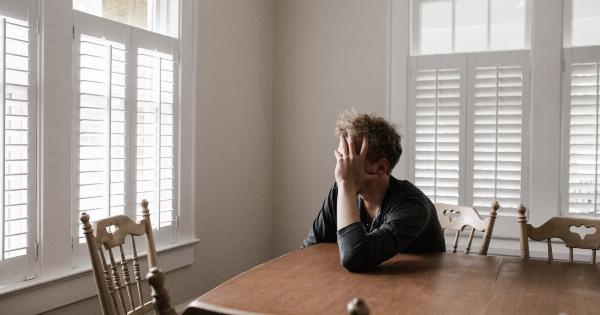Isolation is a complex societal issue that can affect individuals from all walks of life.
However, certain groups in society may be more susceptible to feelings of isolation due to various factors such as discrimination, societal norms, and social exclusion. In this article, we will explore some of these specific groups that may experience higher levels of isolation and the implications it has on their well-being.
1. Elderly Population
The elderly population, especially those living alone or in elderly care facilities, are more prone to feelings of isolation.
As people age, they may experience significant life changes such as retirement, loss of loved ones, and declining physical health, which can limit their ability to engage with their social networks. The absence of social connections can have adverse effects on their mental and emotional well-being, potentially leading to increased feelings of isolation and loneliness.
2. Individuals with Disabilities
Individuals with disabilities often face social barriers that contribute to their sense of isolation. Physical or cognitive impairments can limit their access to social events, employment opportunities, and community involvement.
Stigmatization, discrimination, and lack of inclusive infrastructure further reinforce their isolation, making it challenging for them to form and maintain meaningful relationships and connections with others.
3. LGBTQ+ Community
The LGBTQ+ community has historically faced significant societal discrimination and prejudice, leading to increased social isolation.
Many individuals within this community struggle to find acceptance and support from family, friends, and their communities, making it harder for them to build relationships. The fear of rejection and the higher risk of experiencing violence or harassment based on their sexual orientation or gender identity further exacerbate their feelings of isolation.
4. Immigrants and Refugees
Immigrants and refugees often find themselves in unfamiliar environments, distant from their home countries and the support networks they once had.
Language barriers, cultural differences, and lack of familiarity with local customs can create feelings of isolation and loneliness. Additionally, discriminatory attitudes and exclusionary practices can further marginalize these individuals, making it challenging for them to integrate and feel a sense of belonging in their new communities.
5. Individuals with Mental Health Conditions
People diagnosed with mental health conditions, such as depression, anxiety, or bipolar disorder, may experience various degrees of isolation.
The stigma surrounding mental health can lead to social exclusion and discrimination, causing individuals to distance themselves from others out of fear of judgment or misunderstanding. Additionally, mental health symptoms can affect one’s social functioning and interpersonal relationships, contributing to increased isolation.
6. Single Parents
Single parents, particularly those who do not have strong support systems, often experience heightened isolation. Juggling the responsibilities of parenting alone while also fulfilling financial and household obligations can be overwhelming.
Limited time and energy for social activities, coupled with societal biases and stereotypes about single parenthood, can lead to a sense of isolation and difficulty in building and maintaining relationships.
7. Rural Communities
Rural communities often face unique challenges in terms of isolation. Geographical distance, limited transportation options, and sparse population density can limit social interactions and opportunities for community engagement.
Access to healthcare, education, and recreational facilities may be limited, further exacerbating feelings of isolation among rural residents.
8. Individuals with Chronic Illnesses
Individuals living with chronic illnesses often face physical limitations and frequent medical appointments, which can restrict their ability to engage in social activities.
The unpredictable nature of their conditions may also require them to make sudden lifestyle changes, leading to social isolation as they adapt to new realities. Moreover, the misconceptions and lack of understanding surrounding certain chronic illnesses can contribute to individuals feeling isolated and misunderstood.
9. Individuals Experiencing Homelessness
Homelessness is a severe form of social isolation. Those experiencing homelessness often lack stable housing, making it challenging for them to have consistent social connections or participate fully in society.
They face discrimination and are frequently stigmatized, further isolating them from mainstream communities. The absence of a support system and limited access to basic needs significantly contribute to their isolation.
10. Minority Ethnic and Racial Groups
Minority ethnic and racial groups may face isolation due to various factors, including language barriers, cultural differences, and systemic racism.
These individuals often experience exclusion, unequal opportunities in education and employment, and prejudice, inhibiting their access to social networks and limiting their sense of belonging.
Conclusion
While isolation can affect individuals from all backgrounds, certain groups in society may experience higher levels of isolation due to a range of factors, including discrimination, societal norms, and social exclusion.
Addressing these specific issues and providing platforms for inclusivity and support are essential for fostering a sense of belonging and reducing isolation among these groups.






























